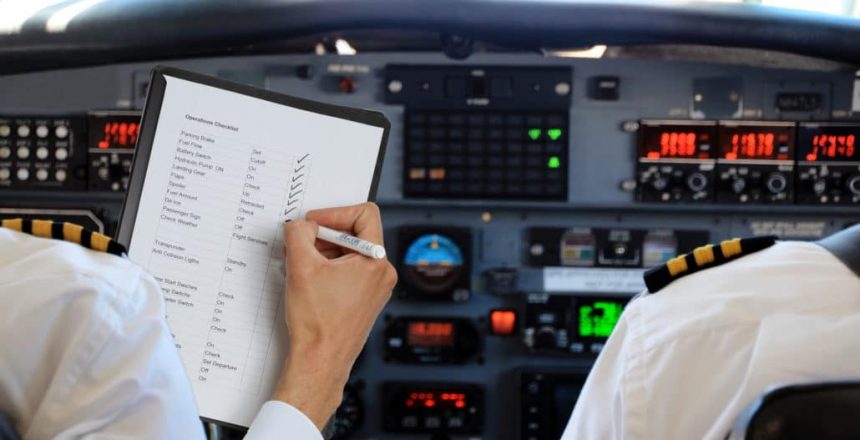This is one regulatory bodies definition of an aircraft checklist:
With challenge and response is it normally the case that there will be a memory procedure to be performed by one or both crew members prior to the checklist being called for. This memory procedure must be carried out and then one of the crew members (depending on responsibility) will call for the checklist.
The pilot not flying or pilot monitoring will read the checklist starting with the checklist title – for example ‘Before Take off Checklist’. They will then read out the challenge to Pilot Flying, both pilots check the challenge status I.e. Trim, then PF responds with the correct response. PM then checks their response is corrected well as the action having been correctly completed.
If it appears that the item has not been completed or has not been completed correctly then the procedure or action is performed again and that checklist item is read again.
With Read and do checklists this will normally be the responsibility of pilot not flying and they will read a checklist out whilst performing the action from that checklist normally unmonitored by the other pilot. A good example of this is the After Landing Checklist. This checklist is still read out loud so the other pilot can hear their colleague completing the checklist. The pilot not flying would also still announce the completion of the checklist I.e. ‘After Landing checklist complete’.
If it appears that none of the items have been completed then the crew must complete their relevant procedures again and once complete, start the checklist again from the top.
Pilots are meticulous about checklists as they can cover us when we make mistakes. Checklists must be performed accurately and without interruption to guard against the danger of missing an item off the list.
Non-normal checklists are checklists that are designed to fix or allow redundancy to a technical problem. These checklists are normally found in a document carried onboard called the QRH (Quick Reference Handbook). There are hundreds of procedures on each aircraft and pilots simply cannot remember them all so the less urgent non-normal checklist items would be a read and do checklist monitored by the other pilot.
The difficulty sometimes could be locating and applying the correct checklist to the technical problem. Some more urgent actions for technical problems have memory items for pilots to perform urgently, but methodically and accurately before retrieving the correct checklist. Examples of technical problems that require urgent intervention are Engine Fire and cabin de-pressurisation.




